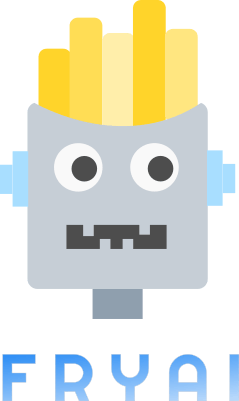- FryAI
- Posts
- Coke's controversial Christmas ad...
Coke's controversial Christmas ad...

Good morning! We are grateful that you have joined us today to explore the latest happenings in AI. 🙏
🤯 MYSTERY AI LINK 🤯
(The mystery link can lead to ANYTHING AI-related: tools, memes, articles, videos, and more…)
Today’s Menu
Appetizer: Coca-Cola releases AI-generated Christmas commercial 🥤
Entrée: OpenAI to launch “Operator” 💻
Dessert: AI helps treat brain tumors 🧠
🔨 AI TOOLS OF THE DAY
🎥 Reeler AI: Turn your idea into a short video. → Check it out
📍 Pin Generator: Create engaging Pins from website URLs. → Check it out
👍 BizPlanner: Write your business plan in minutes. → Check it out
COCA-COLA RELEASES AI-GENERATED CHRISTMAS COMMERCIAL 🥤
Q: Did you hear about the guy who got hit in the head with a can of Coke?
A: He was lucky it was a soft drink. 🙃
What’s new? Coca-Cola has given its iconic “Holidays Are Coming” ad a modern twist with the help of AI, and the public has mixed feelings about it. The commercial was created in partnership with Silverside AI, part of Pereira O’Dell.
How did AI help? AI tools like DALL-E and ChatGPT helped the team quickly visualize ideas, creating a rough draft of the ad in just days. The technology also made it possible to customize the ad for 27 cities, swapping in local skylines and details to connect with audiences around the world. Animators fine-tuned the visuals to ensure Coca-Cola’s branding—like its signature red trucks—stayed true to the original.
“The moment you have a process where creatives can immediately see ideas come to life in real time, it transforms the creative process altogether. It’s a revolutionary thing.”
Why are people upset? Tech Radar has called this AI commercial a “soulless and creepy dystopian nightmare made by AI.” Many believe that by using AI in this commercial, Coca-Cola is losing out on their historically nostalgic, magical brand. However, some think the AI element makes the commercial fascinating. After all, we haven’t questioned polar bears drinking Coke for decades.
“AI can be incredibly useful and often magical, but many people—myself included—will feel that some things, like Coca-Cola’s cozy and magical holiday ad, should remain untouched by technology.”
OPENAI TO LAUNCH “OPERATOR” 💻
Are we supposed to root for or against OpenAI? 🤷♀️
What’s up? OpenAI is gearing up to launch a new AI agent, codenamed “Operator,” in January.
What is the new tool? This tool will go beyond ChatGPT’s current capabilities, taking control of a user’s computer to perform tasks like booking flights or writing code. OpenAI isn’t alone in pursuing this vision. Microsoft’s Copilot and Anthropic’s Claude offer similar agent-like features for PCs, while Google is developing “Jarvis,” rumored to handle tasks like web browsing and shopping.
AI HELPS TREAT BRAIN TUMORS 🧠
Q: What is the brain’s favorite television channel?
A: “The Neural Network.” 📺
What’s new? Researchers have developed an AI tool called FastGlioma which helps spot and remove cancerous brain tumors.
What’s the current problem? When removing brain tumors, surgeons face a tough challenge: how to make sure no tumor tissue is left behind. Even a small amount of leftover cancer can lead to worse outcomes for patients, higher healthcare costs, and more surgeries. For years, tools like MRIs and fluorescent markers have helped, but they aren’t always fast or reliable.
How does the AI tool help? Developed by teams at the University of Michigan and UCSF, this FastGlioma AI tool uses cutting-edge imaging technology to help surgeons find and remove tumor tissue in real time. Here’s how it works: during surgery, a small piece of tissue is placed into a special microscope that creates highly detailed images. FastGlioma then analyzes these images in just 10 seconds, giving the surgeon instant feedback on whether the tissue is cancerous. The system is then able to analyze MRI scans to help identify any similar remaining tissue. Unlike traditional methods, FastGlioma is fast, portable, and doesn’t require complex preparation or expensive tools. With 92% accuracy, it’s far better at spotting tumors than older techniques. Researchers believe this tool could not only improve outcomes for brain cancer patients but also help treat other types of cancer in the future.
TWITTER (X) TUESDAY 🐦
I turned ChatGPT into my personal writing assistant.
And now I only work for 60 minutes a day.
Let me show you the 10 best prompts I use for writing:
— Ryan Lazuka (@lazukars)
9:24 AM • Nov 17, 2024
HAS AI REACHED SINGULARITY? CHECK OUT THE FRY METER BELOW:
What do ya think of this latest newsletter? |


